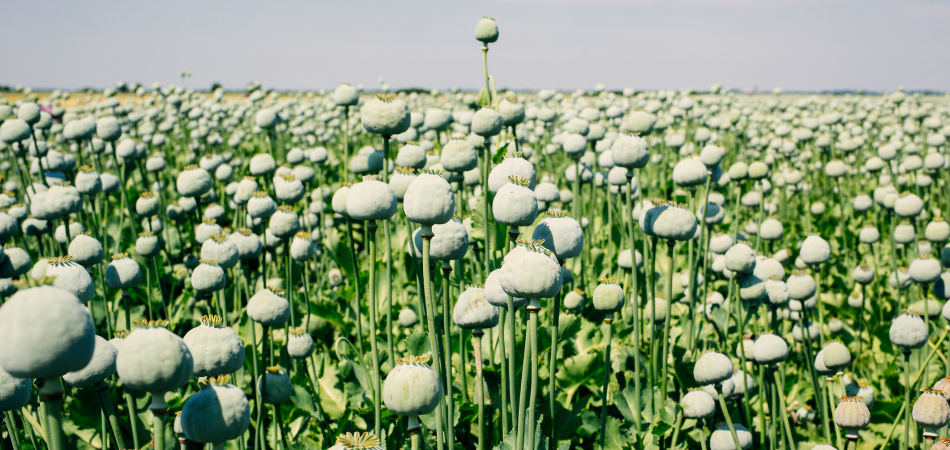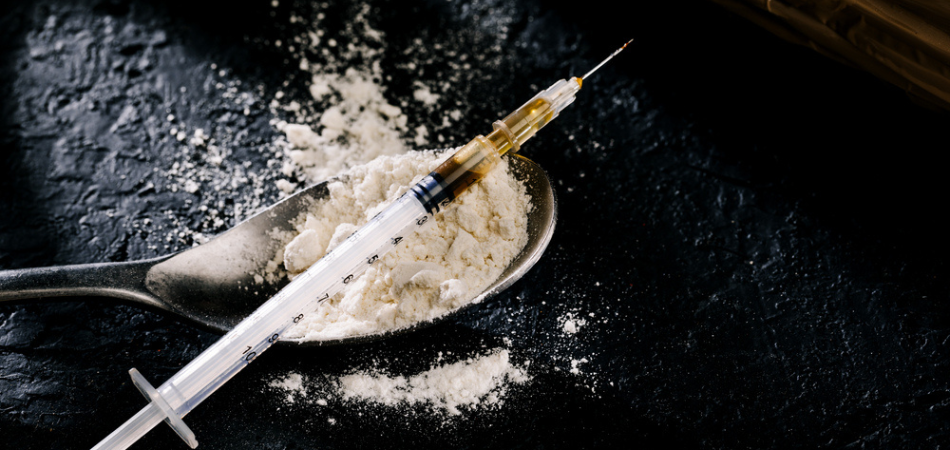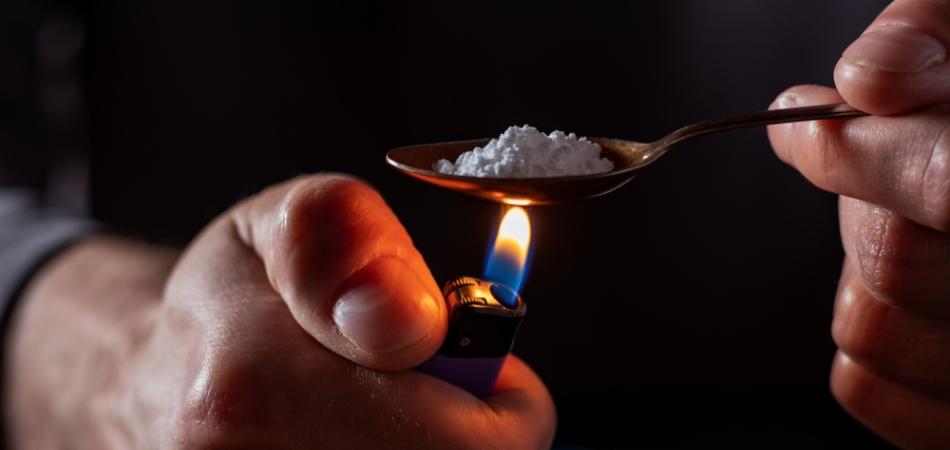
Written by:

Medically Reviewed by:
Last Updated:
October 13th, 2025
Heroin addiction
What is heroin?
Heroin begins its journey far from the streets where it ends up. It’s made from morphine, a natural substance taken from the seed pods of opium poppy plants. Once extracted, the morphine is chemically processed into heroin, creating a substance far more powerful and addictive than the plant it came from. The result is usually a fine white or brown powder, though it can also appear as a sticky dark substance known as black tar.
In the UK, heroin is classed as a Class A drug, the highest category under the Misuse of Drugs Act. This classification is reserved for substances that carry the most serious risks of harm and the harshest legal penalties for possession or supply.
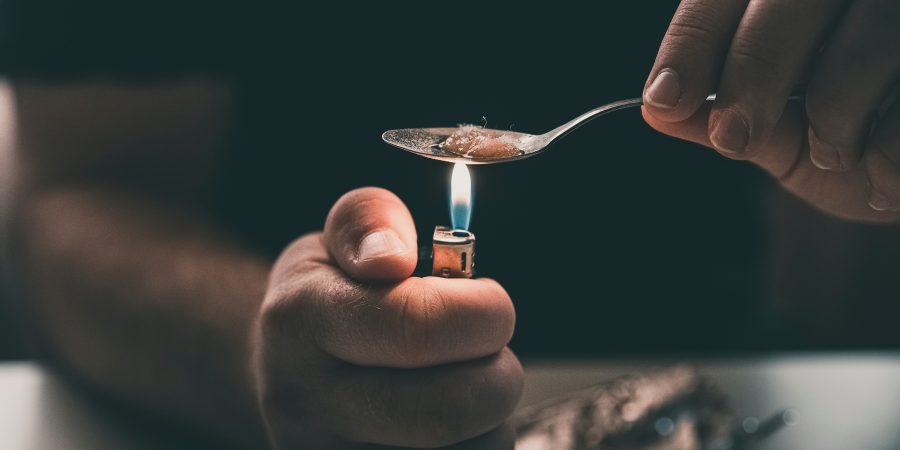
Can you become addicted to heroin after one hit?
As our understanding of drugs and their effects on the body has grown, it’s become clear that not everything we were told in the past was accurate. For years, certain substances were labelled as “instantly addictive” or “impossibly dangerous”, often more to scare people away than to give a true picture. The intention may have been good, but the science behind those warnings wasn’t always strong.
This is why many people have heard the claim that heroin addiction can start after a single hit. Parents, teachers or anti-drug campaigns have repeated it for decades, but the question remains: was it a fact or a deterrent?
Research in the US followed people who had just begun using heroin and found that dependence typically developed within the first 1 to 12 months after the initial use. In other words, the evidence doesn’t support the idea that one hit is enough to guarantee addiction. What it does show, though, is that heroin’s grip can take hold far quicker than most people expect. For many, the slide into addiction happens with alarming speed, even if it isn’t instantaneous.
What makes heroin so addictive?
Heroin’s addictive power comes from the way it hijacks the brain’s reward system. Once in the body, heroin is converted into morphine and quickly binds to mu-opioid receptors in the brain. These receptors normally respond to endorphins, the body’s natural painkillers, but heroin overwhelms them.
By activating these receptors, heroin removes the brakes on dopamine-releasing neurons in the ventral tegmental area (VTA). With inhibition lifted, dopamine floods into the nucleus accumbens, the part of the brain that tells us something is rewarding and worth repeating. The effect is a powerful surge of pleasure and relief that the brain immediately takes note of.
The problem is that not only does the brain enjoy this rush, it also begins to adapt to it. With repeated use, tolerance develops, meaning more heroin is needed to reach the same level of reward. Without it, dopamine levels crash and withdrawal symptoms set in, with pains, aches, agitation, cravings and a desperate pull back toward the drug.
This cycle of quick reward followed by crushing withdrawal is why heroin addiction can take hold so strongly. What starts as a rush soon becomes a need, locking users into a pattern that is difficult to escape.

How can heroin addiction affect a person’s life?
Heroin has a way of weaving itself into every part of life. Some of the damage shows up almost immediately, like health problems linked to injecting or smoking, while other effects take months or even years to fully appear. At first, it can feel like the trade-off is worth it: small symptoms in exchange for the relief heroin brings. But over time those symptoms grow and when the long-term consequences set in, they’re far harder to undo.
- Collapsed veins and infections from repeated injecting
- Greater risk of HIV and hepatitis B or C through shared needles
- Severe constipation and long-lasting digestive issues that damage health over time
- Weakening of the immune system, leaving the body exposed to frequent illness
- Lasting damage to the brain’s white matter, affecting memory and decision-making
- Breathing problems, including the risk of respiratory failure during overdose
- Fast financial decline as heroin use takes priority over all other expenses
- Relationships breaking down due to secrecy, lies or betrayal
- Criminal charges connected to possession, theft or desperate attempts to fund use
- Loss of work or education opportunities through repeated absence and poor performance
- Increasing isolation as non-using friends and family distance themselves
- Higher chance of homelessness linked to unemployment and financial collapse
We understand that bullet point symptoms on a page can never fully capture the devastating effects of heroin addiction. What can’t be ignored, though, are the statistics. In the next section, we’ll look at figures that bring the scale of heroin use in the UK into stark focus.

Heroin use in the UK
Heroin continues to hold a devastating grip on the UK, with an estimated 300,000 people currently using the drug. That figure may seem relatively small against the wider population, but the consequences that stem from it ripple out into every corner of society.
Each statistic that follows reflects how deeply entrenched this issue is and how one drug continues to drive disproportionate levels of harm.
Looking at these figures together, it’s hard to deny the grip heroin has on the UK. The strain shows up in hospitals already pushed to their limits, in families left dealing with loss and in communities facing the fallout of crime. Money is drained too, with billions pulled away from services that should be strengthening lives rather than patching up damage.
But what all of this shows is that heroin addiction demands immediate attention. Behind every number is a person whose life has been pulled into something incredibly hard to break free from, and recognising when that shift has happened is often the first way forward. That’s why the next section turns to the signs of heroin addiction, helping you see when use has crossed the line into dependency and when action needs to be taken.
What are the signs of heroin addiction?
If you or someone you care about is using heroin, recognising the signs of addiction is one of the most important steps you can take. Heroin is a drug that can pull people into dependence with alarming speed, and quick intervention often makes the difference between slipping further into addiction or finding a way out.
- Needle marks or scars on arms, legs or other injection sites
- Sudden and noticeable weight loss that leaves the body looking frail
- Drowsiness or “nodding off” at unusual times of the day
- Frequent runny nose or respiratory issues caused by snorting or smoking
- Pupils that remain pinpoint even in dim lighting
- Neglecting responsibilities at work, school or home as heroin use takes priority
- Lying about whereabouts or hiding paraphernalia such as needles, foil or spoons
- Stealing money or valuables to fund ongoing use
- Withdrawing from friends or family who don’t use drugs
- Spending large amounts of time seeking, using or recovering from heroin
- Intense cravings that dominate thoughts and decision-making
- Severe mood swings that range from euphoria to irritability or despair
- A loss of interest in hobbies, goals or anything unrelated to heroin
- Anxiety that intensifies when heroin isn’t available
- Depression or hopelessness that deepens with continued use
If you’ve noticed even one or two of these signs, it’s worth looking closely at your relationship with heroin. Addiction often builds faster than people expect, and in the next section, you’ll find questions designed to help you take a more honest self-assessment.
Do I have a heroin addiction?
Reading about the signs of heroin addiction can feel heavy, and it isn’t always easy to see yourself in those descriptions. That’s why it can help to step back and ask direct questions about how heroin is showing up in your life. The aim here is to give you a clearer sense of where you stand and whether your use has started to cross into dangerous territory.
Here are six questions to ask yourself:
- Do you find yourself craving heroin even when you try not to think about it?
- Have you skipped work, school or family responsibilities because of heroin use?
- Are you spending money on heroin that was meant for essentials like food or rent?
- Do you continue to use heroin even though it has harmed your health or relationships?
- Have you tried to stop using heroin but found yourself returning to it quickly?
- Do you spend large parts of your day seeking, using or recovering from heroin?
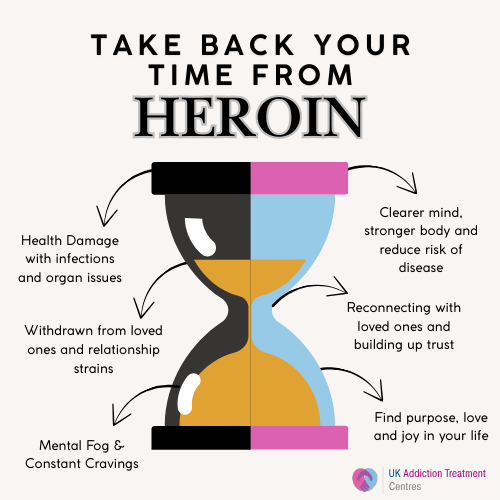
If you answered yes to one or more of these questions, the next step is to reach out to professionals who can guide you forward. With a drug as devastating as heroin, there’s no room for a “let’s see what happens” approach. The risks are too high, and waiting can make the path out even harder to find.
Is there help available for heroin addiction?
If heroin has become part of your life, the most important thing to know is that recovery is possible. You don’t have to go through it alone and at UKAT we’ve helped countless people step away from heroin addiction and begin to rebuild their lives.
Treatment often starts with heroin detox, giving your body the chance to clear the drug in a safe and supported environment. From there, therapy provides space to understand what lies beneath the addiction, while also building new ways of coping with stress, trauma or day-to-day pressures. Once heroin addiction treatment ends, aftercare continues to support you by putting relapse prevention plans in place, helping you stay steady as you move forward.
Heroin can feel like it takes control of everything, but it doesn’t have to define your future. Reach out to UKAT today and take the first step towards leaving heroin behind.
Frequently asked questions
(Click here to see works cited)
- Santiago Rivera, O. J., Havens, J. R., Parker, M. A., & Anthony, J. C. (2018). Risk of Heroin Dependence in Newly Incident Heroin Users. JAMA Psychiatry, 75(8), 863. https://doi.org/10.1001/jamapsychiatry.2018.1214
- Kosten, T., & George, T. (2002). The Neurobiology of Opioid Dependence: Implications for Treatment. Science & Practice Perspectives, 1(1), 13–20. https://doi.org/10.1151/spp02111
- “Addiction Healthcare Goals.” GOV.UK, 6 Dec. 2024, www.gov.uk/government/publications/life-sciences-healthcare-goals/addiction-healthcare-goals
- Office for Health Improvement & Disparities. “Adult Substance Misuse Treatment Statistics 2022 to 2023: Report.” GOV.UK, 21 Dec. 2023, www.gov.uk/government/statistics/substance-misuse-treatment-for-adults-statistics-2022-to-2023/adult-substance-misuse-treatment-statistics-2022-to-2023-report
- Office for National Statistics. “Deaths Related to Drug Poisoning in England and Wales.” Ons.gov.uk, Office for National Statistics, 23 Oct. 2024, www.ons.gov.uk/peoplepopulationandcommunity/birthsdeathsandmarriages/deaths/bulletins/deathsrelatedtodrugpoisoninginenglandandwales/2023registrations
- Still Ambitious for Recovery. 2024, www.centreforsocialjustice.org.uk/wp-content/uploads/2024/11/CSJ-Still_Ambitious_for_Recovery.pdf




